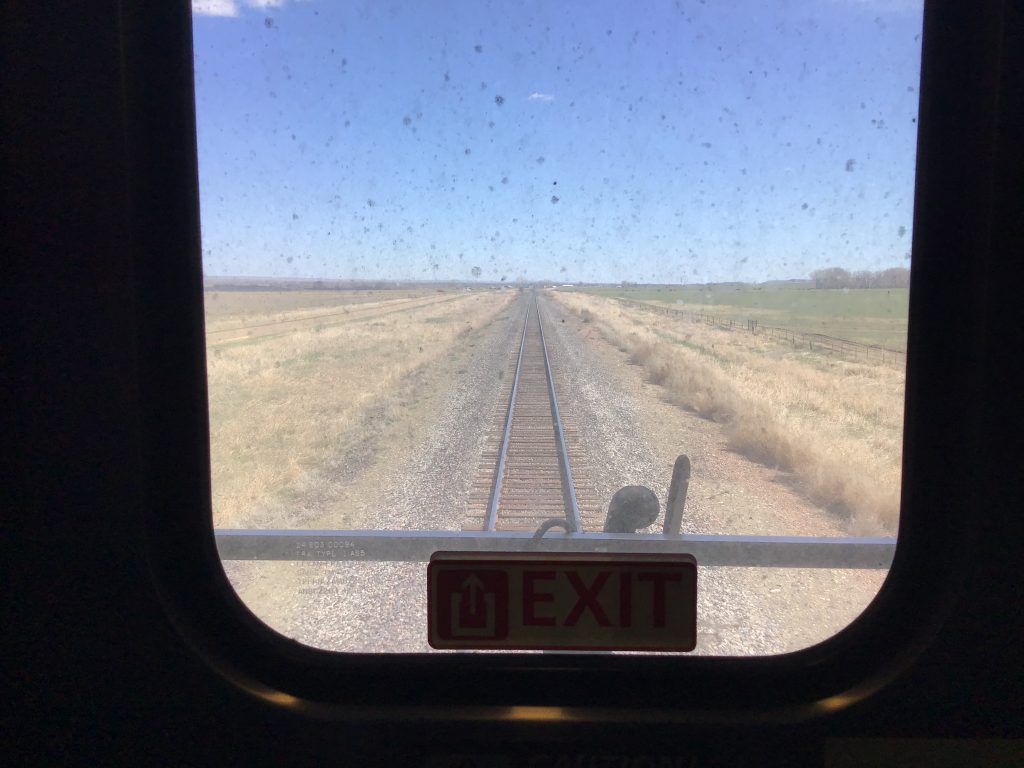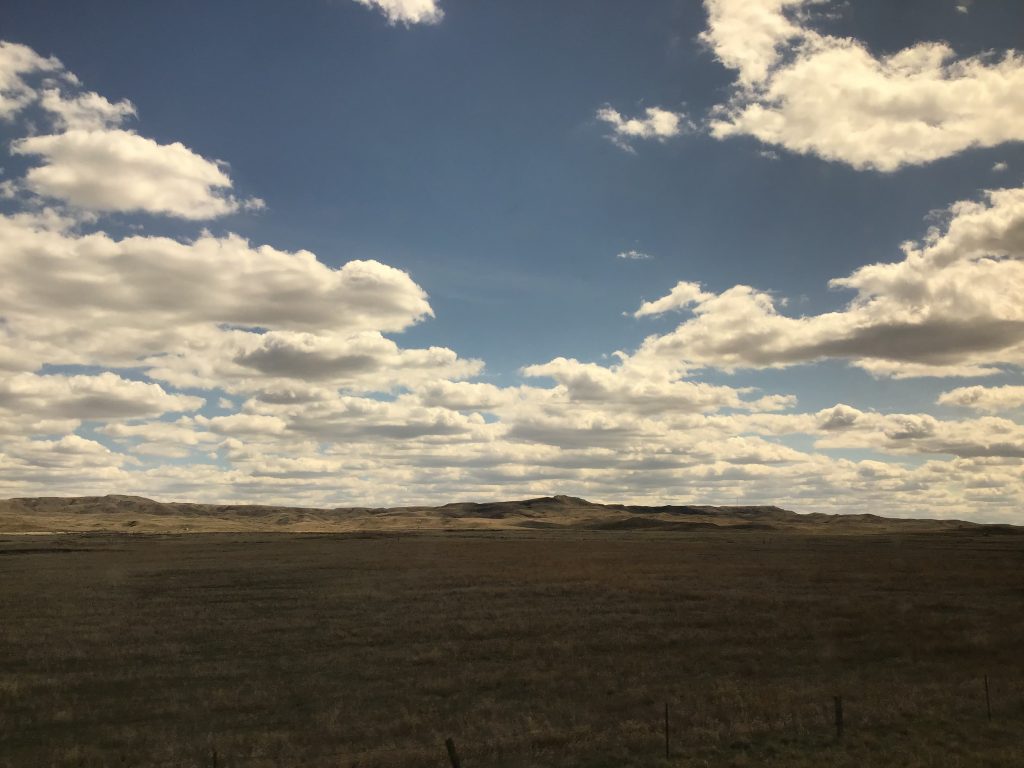Thinking about the role of science in tribal communities
By Paul Boyer

I look up from my book just in time to see the bottlebrush tail of a fox rise up out of the grass. At nearly the same moment, I catch the flash of a large bird—a pheasant—racing away for dear life. There is a brief chase, but without the element of surprise, the fox offers only half-hearted pursuit. The pheasant, too, quickly loses interest. Both stop, only few feet apart, frozen in a tableau of hunter and prey.
What happened next, I’ll never know. I’m aboard a west-bound Amtrak, and in the blink of an eye the image is lost as we race by, pulsing our way through the Montana prairie.
In truth, I’m not one hundred percent sure it was a pheasant; I’m not an ornithologist, and it all happened so fast. But my trip is in the service of science. I’m on my way to the Fort Belknap and Fort Peck reservations of Montana to learn about new academic programs and research projects within their tribal colleges. In the coming months we’ll be sharing stories about the ongoing environmental damage caused by world’s largest cyanide leach open pit gold mine, and what it means to live in a world that, according to one prominent hydrologist, is literally running out of water. We’ll also explore why the reintroduction of buffalo on reservation land is one of the most politically divisive issues in Montana.
This expanded coverage reflects some important changes taking place at Native Science Report. Supported by a generous grant from the National Science Foundation, we recently unveiled a new and more sophisticated website. But that is only the beginning. NSF funding is also allowing us to provide more, and more diverse, coverage. This trip to Montana is the first of many planned sojourns.
But travel has another benefit. It provides a needed reminder that, even now, very few people know about tribal colleges and the communities they serve. During my two days aboard the Empire Builder (a name worth pondering), I chatted with many nice people who politely asked where I was going and what I did. The first question was easily answered (Havre, Montana), the second, less so. When I tell them what I do, most don’t know how to respond.
A frozen smile on the face of the woman sitting across from me in the dining car suggested that my answer was threatening to produce an awkward silence. But we were sharing a table and only on our first course, so she gamely tried to keep the conversation going. “Are reservations safe?” is the question she came up with.
Now it was my turn to wonder how to reply as I considered all of the misperceptions that produce such questions. “Well,” I said, sweeping my hand across the window, “we’re on a reservation right now.” We were just west of Wolf Point, rolling along the southern edge of the Fort Peck Reservation. The landscape was an endless expanse of grass merging, at the far horizon, with a sky filled with clouds so perfectly spaced and so three dimensional, they looked more architectural than atmospheric. It was a lovely, and, I hoped, reassuring scene.

Later, though, I continued to think about the woman’s question and all of the possible replies. My response, I decided, was too enigmatic. I should have been more comforting: “Don’t worry; you’re perfectly safe.”
But I also decided that I missed an opportunity to make a larger point. The real question is not “Are we safe?” but are tribes—as nations—safe from all the dangers they face? Are they safe from the debilitating effects of poverty and unemployment? Are they safe from addiction and despair? Are they safe from poisoned air and water? Are they safe from the loss of language and culture? Are they safe from the nation’s indifference and neglect?
From this vantage point, the answers are more complex. In recent decades, tribes have worked hard to reassert their rights as sovereign nations and to take back control of their own lands. The founding of tribally controlled colleges is just one part of what some rightly call the Native American renaissance. Clearly, there is reason for hope. But no one who lives on a reservation needs to be told that tribes are not yet secure. The work of tribal nation-building has, in many respects, only just begun.
It was, for me, a reminder that what we are really covering in Native Science Report is not simply the development of new academic programs or opportunities for faculty research—the usual disciplinary preoccupations of academe. Rather, what we are really investigating are efforts to build healthy, caring, and sustainable Native nations. The programs and projects we hope to write about in the coming years all represent efforts to understand the threats, to finding solutions, and to train leaders who can make sound decisions.
America’s political leaders talk a great deal about the importance of the STEM disciplines. They hold them in esteem—cherished above all others–-because they are believed to make the nation stronger and, as it is often said, more “competitive” in a “global economy.” True enough, though this argument is made so often and so reflexively that it threatens to become a tired cliché (and also tends to celebrate wealth and power over wisdom and compassion). But for tribal communities, STEM really is about building stronger nations, and in ways that really do strengthen the larger fabric of society. Telling that story is what Native Science Report is all about.
With these thoughts in mind, we arrived in Havre and my work began. In conversation with a science instructor at one tribal college, incidentally, I learned that pheasants are, indeed, plentiful and commonly seen. She was right: On my train trip home, I saw them everywhere; they were practically lining the tracks.
But I didn’t see any more foxes.
Paul Boyer is editor of Native Science Report

WONDERFUL WORDS OF CARING ABOUT WHAT IS HAPPENING ON INDIAN RESERVATIONS WHERE MOST TRIBAL COLLEGES ARE LOCATED. IT IS NICE TO HEAR ABOUT THE LAND, ENVIRONMENT AND “pheasants” a pleasant reminder of my life growing up riding with my Dad while he hunted pheasants and our dog, Buster, who would fetch them. We would then take them home (maybe one) to fry and eat.